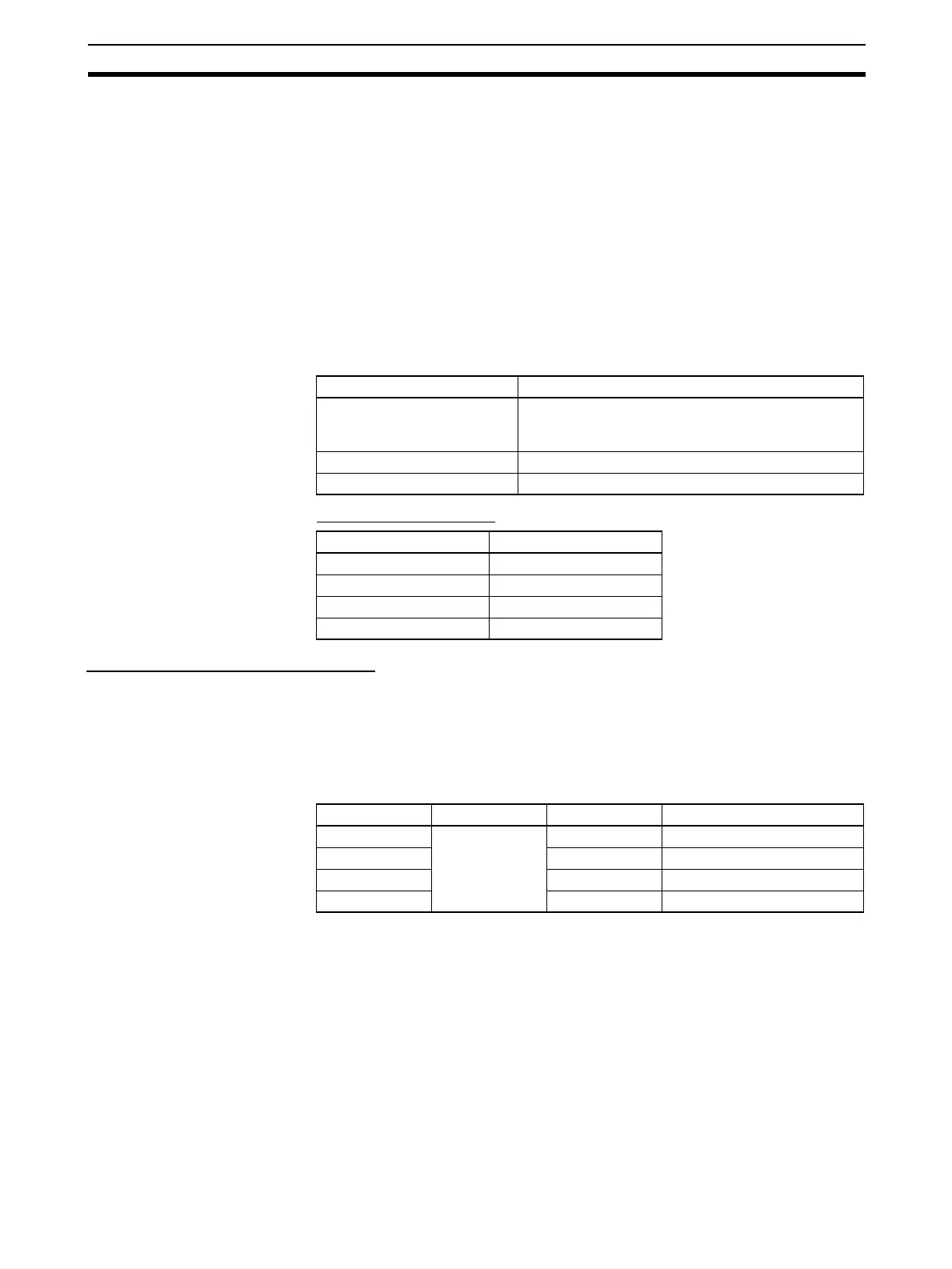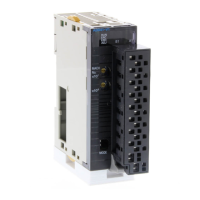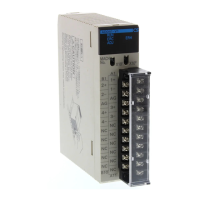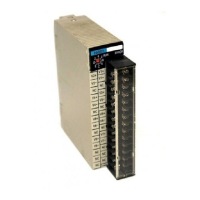127
Built-in Inputs Section 6-1
Restrictions on Interrupt
Inputs (Direct Mode)
• Interrupt inputs 0 to 3 cannot be used when built-in inputs IN0 to IN3 are
being used as general-purpose inputs or quick-response inputs.
• Interrupt input 3 cannot be used when high-speed counter input 0 is being
used and the high-speed counter 0 reset method is set to Phase-Z signal
+ Software reset.
Interrupt input 2 cannot be used when high-speed counter input 1 is being
used and the high-speed counter 1 reset method is set to Phase-Z signal
+ Software reset.
• Interrupt inputs 0 and 1 cannot be used when the origin search function is
enabled for pulse output 0 (enabled in the PLC Setup).
Interrupt inputs 2 and 3 cannot be used when the origin search function is
enabled for pulse output 1 (enabled in the PLC Setup).
Specifications
Interrupt Task Numbers
Interrupt Inputs (Counter Mode)
Overview This function counts input signals (up or down differentiated) and starts an
interrupt task when the counter PV reaches the SV (or 0 when decrementing.)
The four interrupt inputs control interrupt tasks 140 to 143. The interrupt task
numbers cannot be changed.
Bit Allocations
Item Specifications
Number of inputs 4 inputs (The 4 input terminals are shared with the
quick-response inputs, high-speed counter (Phase-Z
signal), and general-purpose inputs.)
Allocated data area CIO 2960 bits 00 to 03
Interrupt detection Up differentiation or down differentiation
Input bit Interrupt task number
CIO 2960 bit 00 140
CIO 2960 bit 01 141
CIO 2960 bit 02 142
CIO 2960 bit 03 143
Code Word address Bit Function
IN0 CIO 2960 00 Interrupt input 0
IN1 01 Interrupt input 1
IN2 02 Interrupt input 2
IN3 03 Interrupt input 3
